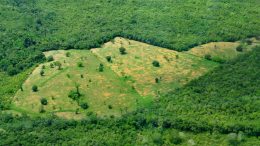The ongoing COVID-19 pandemic has made it clear that human health is inextricably part of the ecosystem we exist in.
While the pandemic, which likely arose from the global wildlife trade, has brought entire industries to a screeching halt, the health consequences of other types of environmental damage are still ignored in favor of business-as-usual activities.
According to recent studies, zoonotic diseases — those pathogens that can jump from animals to humans — are responsible for an estimated 75% of emerging infectious diseases worldwide. In the United States, approximately 72% of zoonotic diseases threatening human health since the year 2000 originated from the legal or illegal wildlife trade. The COVID-19 pandemic may be exceptional for its reach and social disruption, but its link to the destructive trade in wild animals is just one of many examples of how human-made changes to the environment are spreading diseases.
Watch our video below to see some of the ways human health and environmental health are interconnected:
![]()



2 thoughts on “5 Ways Environmental Damage Drives Human Diseases Like COVID-19”
Comments are closed.